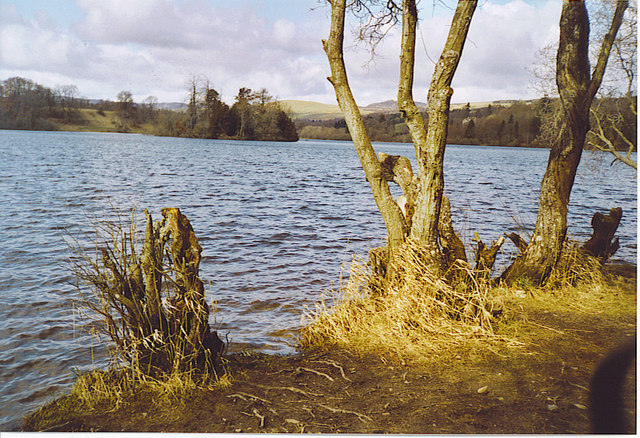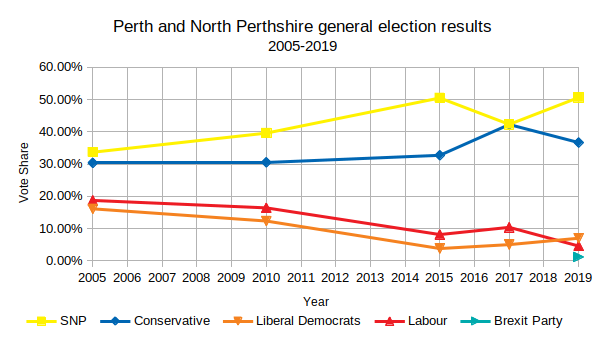|
Craigie (hamlet), Perth And Kinross
Craigie is a village west of Blairgowrie, in Perth and Kinross, Scotland. It is situated on the eastern side of Loch Clunie. Robert Moray, the first President of the Royal Society The president of the Royal Society (PRS) is the elected Head of the Royal Society of London who presides over meetings of the society's council. After informal meetings at Gresham College, the Royal Society was officially founded on 28 November ..., was the elder of two sons of Sir Mungo Moray of Craigie. References Villages in Perth and Kinross {{PerthKinross-geo-stub ... [...More Info...] [...Related Items...] OR: [Wikipedia] [Google] [Baidu] |
Perth And Kinross
Perth and Kinross ( sco, Pairth an Kinross; gd, Peairt agus Ceann Rois) is one of the 32 council areas of Scotland and a Lieutenancy Area. It borders onto the Aberdeenshire, Angus, Argyll and Bute, Clackmannanshire, Dundee, Fife, Highland and Stirling council areas. Perth is the administrative centre. With the exception of a large area of south-western Perthshire, the council area mostly corresponds to the historic counties of Perthshire and Kinross-shire. Perthshire and Kinross-shire shared a joint county council from 1929 until 1975. The area formed a single local government district in 1975 within the Tayside region under the ''Local Government (Scotland) Act 1973'', and was then reconstituted as a unitary authority (with a minor boundary adjustment) in 1996 by the ''Local Government etc. (Scotland) Act 1994''. Geographically the area is split by the Highland Boundary Fault into a more mountainous northern part and a flatter southern part. The northern area is a popular to ... [...More Info...] [...Related Items...] OR: [Wikipedia] [Google] [Baidu] |
Perth And North Perthshire (UK Parliament Constituency)
Perth and North Perthshire is a county constituency of the House of Commons of the Parliament of the United Kingdom. It elects one Member of Parliament (MP) by the first past the post system of election. The constituency was created in 2005. Campaigns in the seat have resulted in a minimum of 30% of votes at each election consistently for the same two parties' choice for candidate, and the next lower-placed party's having fluctuated between 8.1% and 18.7% of the vote since its relatively recent creation. The seat attracted a record seven candidates in 2015 and has seen as few as four, in 2017. Boundaries As a result of the Fifth Periodical Review of the Boundary Commission for Scotland, the constituency (seat) was created to cover northern parts of the Perth and Kinross council area, and first used in the 2005 general election. Ochil and South Perthshire was created, at the same time, to cover the rest of that council area and the Clackmannanshire council area. Before ... [...More Info...] [...Related Items...] OR: [Wikipedia] [Google] [Baidu] |
Perth (Scottish Parliament Constituency)
Perth was a constituency of the Scottish Parliament ( Holyrood). It elected one Member of the Scottish Parliament (MSP) by the plurality (first past the post) method of election. Also, however, it was one of nine constituencies in the Mid Scotland and Fife electoral region, which still elects seven additional members, in addition to nine constituency MSPs, to produce a form of proportional representation for the region as a whole. For the Scottish Parliament election, 2011, the constituency of Perth, was abolished and replaced by Perthshire North and Perthshire South and Kinross-shire. Electoral region Up to 2011, the other eight constituencies of the South of Scotland region were Dunfermline East, Dunfermline West, Fife Central, Fife North East, Kirkcaldy, Ochil, Stirling and Tayside North. The region covers all of the Clackmannanshire council area, all of the Fife council area, all of the Perth and Kinross council area, all of the Stirling council area a ... [...More Info...] [...Related Items...] OR: [Wikipedia] [Google] [Baidu] |
Mid Scotland And Fife (Scottish Parliament Electoral Region)
Mid Scotland and Fife is one of the eight electoral regions of the Scottish Parliament which were created in 1999. Nine of the parliament's 73 first past the post constituencies are sub-divisions of the region and it elects seven of the 56 additional-member Members of the Scottish Parliament (MSPs). Thus it elects a total of 16 MSPs. The Mid Scotland and Fife region shares boundaries with the Central Scotland, Highlands and Islands, North East Scotland and West of Scotland regions and is connected with the Lothian region by bridges across the Firth of Forth. Constituencies and council areas 2011–present As a result of the First Periodic Review of Scottish Parliament Boundaries the boundaries for the region and constituencies were redrawn for the 2011 Scottish Parliament election. 1999–2011 The constituencies were created in 1999 with the names and boundaries of Westminster constituencies, as existing in at that time. The Holyrood constituencies cover all of th ... [...More Info...] [...Related Items...] OR: [Wikipedia] [Google] [Baidu] |
Blairgowrie And Rattray , South Africa
{{Geodis ...
Blairgowrie may refer to: * Blairgowrie, Perth and Kinross, a town in Scotland now part of the burgh of Blairgowrie and Rattray * Blairgowrie, Victoria, Australia * Blairgowrie, Gauteng Blairgowrie is a suburb of Johannesburg, South Africa. It is located in Region B of the City of Johannesburg Metropolitan Municipality. It is named after the town of Blairgowrie in Scotland. The suburb has an active community association called ... [...More Info...] [...Related Items...] OR: [Wikipedia] [Google] [Baidu] |
Loch Clunie
''Loch'' () is the Scottish Gaelic, Scots and Irish word for a lake or sea inlet. It is cognate with the Manx lough, Cornish logh, and one of the Welsh words for lake, llwch. In English English and Hiberno-English, the anglicised spelling lough is commonly found in place names; in Lowland Scots and Scottish English, the spelling "loch" is always used. Many loughs are connected to stories of lake-bursts, signifying their mythical origin. Sea-inlet lochs are often called sea lochs or sea loughs. Some such bodies of water could also be called firths, fjords, estuaries, straits or bays. Background This name for a body of water is Insular CelticThe current form has currency in the following languages: Scottish Gaelic, Irish, Manx, and has been borrowed into Lowland Scots, Scottish English, Irish English and Standard English. in origin and is applied to most lakes in Scotland and to many sea inlets in the west and north of Scotland. The word comes from Proto-Indo ... [...More Info...] [...Related Items...] OR: [Wikipedia] [Google] [Baidu] |
Ordnance Survey
, nativename_a = , nativename_r = , logo = Ordnance Survey 2015 Logo.svg , logo_width = 240px , logo_caption = , seal = , seal_width = , seal_caption = , picture = , picture_width = , picture_caption = , formed = , preceding1 = , dissolved = , superseding = , jurisdiction = Great BritainThe Ordnance Survey deals only with maps of Great Britain, and, to an extent, the Isle of Man, but not Northern Ireland, which has its own, separate government agency, the Ordnance Survey of Northern Ireland. , headquarters = Southampton, England, UK , region_code = GB , coordinates = , employees = 1,244 , budget = , minister1_name = , minister1_pfo = , chief1_name = Steve Blair , chief1_position = CEO , agency_type = , parent_agency = , child1_agency = , keydocument1 = , website = , footnotes = , map = , map_width = , map_caption = Ordnance Survey (OS) is the national mapping agency for Great Britain. The agency's name indicates its original military purpose (se ... [...More Info...] [...Related Items...] OR: [Wikipedia] [Google] [Baidu] |
Robert Moray
Sir Robert Moray (alternative spellings: Murrey, Murray) FRS (1608 or 1609 – 4 July 1673) was a Scottish soldier, statesman, diplomat, judge, spy, and natural philosopher. He was well known to Charles I and Charles II, and to the French cardinals Richelieu and Mazarin. He attended the meeting of the 1660 committee of 12 on 28 November 1660 that led to the formation of the Royal Society, and was influential in gaining its Royal Charter and formulating its statutes and regulations. He was also one of the founders of modern Freemasonry in Great Britain. Early life and education Moray was the elder of two sons of a Perthshire laird, Sir Mungo Moray of Craigie. His grandfather was Robert Moray of Abercairny (near Crieff), and his mother was a daughter of George Halket of Pitfirran, Dunfermline. An uncle, David Moray, had been a personal servant of Henry Frederick, Prince of Wales. Some biographers have claimed that Moray attended the University of St Andrews and conti ... [...More Info...] [...Related Items...] OR: [Wikipedia] [Google] [Baidu] |
President Of The Royal Society
The president of the Royal Society (PRS) is the elected Head of the Royal Society of London who presides over meetings of the society's council. After informal meetings at Gresham College, the Royal Society was officially founded on 28 November 1660 when a group of academics decided to find "a College for the Promoting of Mathematicall Experimentall Learning", acquiring a Royal Charter on 15 July 1662. The Royal Charter nominated William Brouncker as president, and stipulated that future presidents should be elected by the Council and Fellows of the society at anniversary meetings each year on St. Andrew's Day (30 November). The details of the presidency were described by the second Royal Charter, which did not set any limit on how long a president could serve. There were considerable fluctuations in the president's term of office until well into the 19th century. By then, sentiment had turned against electing wealthy amateurs solely because they might become patrons of the soci ... [...More Info...] [...Related Items...] OR: [Wikipedia] [Google] [Baidu] |
Clunie Castle Island, Loch Of Clunie
Clunie is a small settlement in Perthshire, Scotland, west of Blairgowrie. It lies on the western shore of the Loch of Clunie. History Near the village on a small hill are the foundations of an early defensive settlement. The fortifications on the site date back to the 9th century and even Iron Age material has been discovered at the site. There is also evidence of defensive structures nearby to this hill fort dating back to the Roman period. One notable use of this hill site was by Kenneth MacAlpin, the first king of Scotland, as a base for hunting in the nearby royal forest of Clunie. English troops occupied the site following their victory at the Battle of Dunbar during the First War of Scottish Independence. On a small island (formerly a crannog) in the loch stand the remains of Clunie Castle, a tower house of the bishops of Dunkeld. The current parish church in the village dates from 1840, designed by Perth architect William Macdonald Mackenzie, replacing a p ... [...More Info...] [...Related Items...] OR: [Wikipedia] [Google] [Baidu] |




